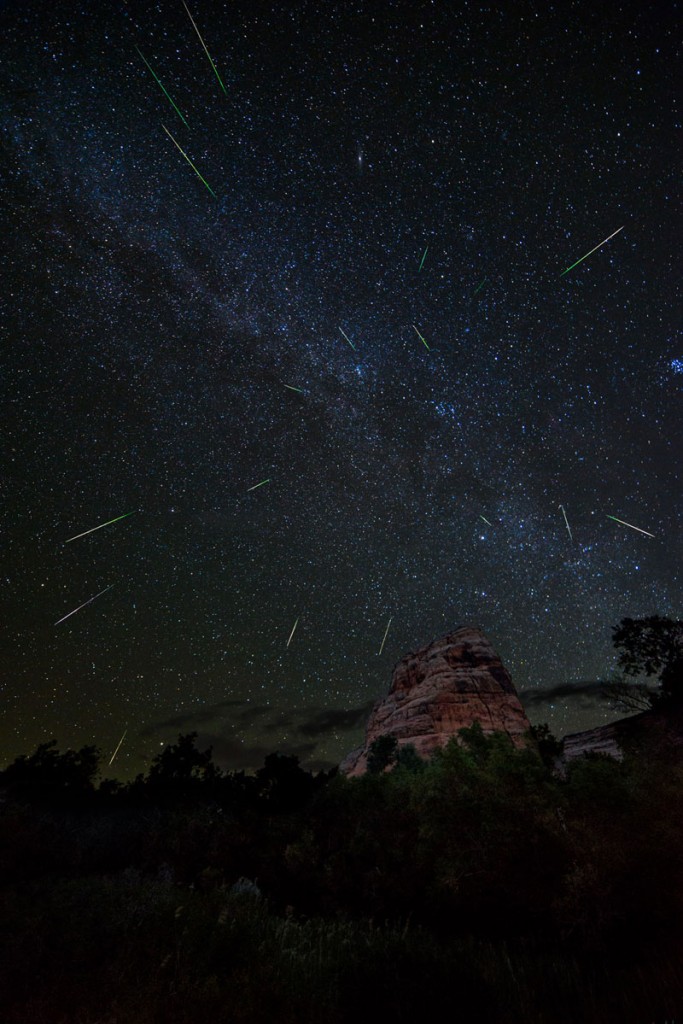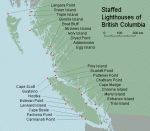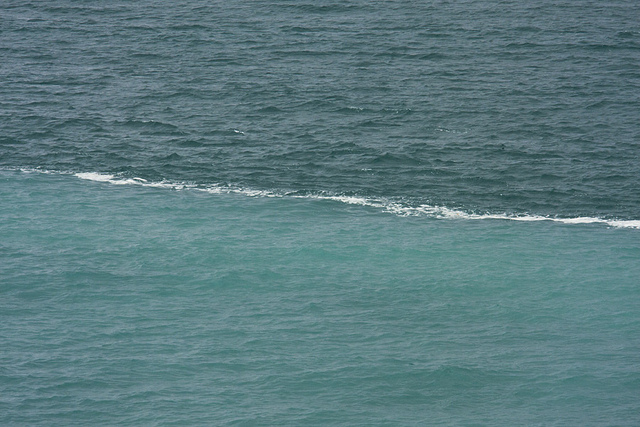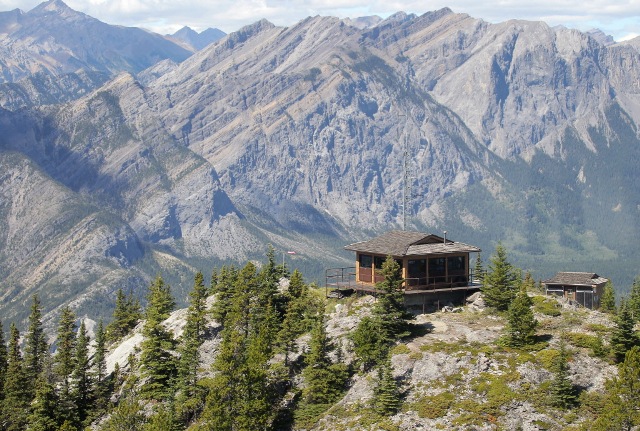
In my articles A Lighthouse at Night and Mise Tales Twenty-Four I mentioned how brilliant the meteor showers were in a lighthouse environment because of lack of light pollution. Continue reading Photographing a Meteor Shower

In my articles A Lighthouse at Night and Mise Tales Twenty-Four I mentioned how brilliant the meteor showers were in a lighthouse environment because of lack of light pollution. Continue reading Photographing a Meteor Shower
What do you think a lighthouse keeper would do if he spotted this floating on the ocean in front of his lighthouse? My first reaction would be to run and call for help!
This article came from the Military Photography website on Facebook with credit to Scripps Institution of Oceanography.
Launched in 1962, the bizarre research vessel Flip (Floating Instrument Platform) can go from a horizontal to vertical position while staying afloat and stable in heavy seas – even in 80-foot waves. That allows it to perform oceanographic research measurements with great accuracy. Inside the crew areas is a strange Escher-like world of doors in floors, portholes in ceilings, and tables bolted to walls. . . more
[su_youtube url=”http://youtu.be/3hYafJIr1B4″ width=”460″ height=”360″]
Later I was thinking it is too bad that this technology was not available for the Canadian weather ships that used to be off our Canadian coasts. They could have operated nicely with a ship that only rose three (3) inches in eighty (80) foot waves!
More information and links on this Wikipedia article.
The following is a direct copy from the Wikipedia article on lighthouses. It is very comprehensive, and may help you understand why we had lighthouses, and why we still need them – because modern unmanned technology fails!
I have left all the webpage links and EDIT links intact in case someone has something to contribute to the article. It is a long article, but worth reading. never cease learning!
***************************

The lighthouse of Aveiro, west coast of Portugal

The Roman lighthouse at Dover Castle
A lighthouse is a tower, building, or other type of structure designed to emit light from a system of lamps and lenses and used as an aid to navigation for maritime pilots at sea or on inland waterways.
Lighthouses mark dangerous coastlines, hazardous shoals, reefs, safe entries to harbors, and can also assist in aerial navigation. Once widely used, the number of operational lighthouses has declined due to the expense of maintenance and replacement by modern electronic navigational systems. Continue reading Lighthouse
The photo above is a screen capture of part of the Tar Sands SOS webpage. Click the photo above to go to the webpage and you can track the tar sands tankers on the interactive map, scroll down the webpage and learn more why the tar sands tankers are a bad idea. One thing I learned is that tar sands oil sinks to the ocean bed rather than floating up on the beaches. This lengthens the time the oil can pollute British Columbia waters!
I have seen an oil spill personally – it is not a pretty sight!
The idea for this story came from an article in the Vancouver Sun newspaper. I asked for permission to reprint it here for all to see, and they said I would have to pay them. This was an article about the Inside Passage ferry trip with mention of a couple of lighthouses – very few actually. I am not even going to mention the title of the story – how can they turn down free advertising. 😉

When you visit Canada do you plan on seeing some lighthouses? We have twenty-seven (27) manned lighthouses on the west coast of British Columbia (BC); Canada. There are other unmanned lighthouses that are available for viewing also. You can see some of them if you wish with the BC Ferries, plus enjoy wonderful trips through BC waters.
The Inside Passage
Let us start with the longest trip first. How about fifteen (15) hours on a luxurious ferry in daylight so that you can make many photos. Fifteen hours may seem like a long time, but there is so much to see that time flies by, especially if the weather is fine.


There are two ferries on the route (2013) – the Northern Expedition and the Northern Adventure. You can actually follow them live on this website.
Continue reading Inside Passage Ferry Trip to Visit Some of the Lighthouses
For an update on what a Mise Tale is then please see Mise Tales One.
I found two new lighthouses – not manned, but not in my lists. One is:
The Santa Marta Lighthouse and Museum located in Cascais, Portugal
[private]
1 March 2010 | By Catherine Slessor
A highly poetic abstract exploration for Portugal’s first lighthouse museum. Photography by Fernado Guerra
Some time before Eduardo Souto de Moura’s Paula Rego museum (AR November 2009) added the coastal town of Cascais to the gazetteer of Portuguese contemporary architecture, Aires Mateus put a marker down with the Santa Marta Lighthouse Museum. Though a smaller project and one that involved melding together historical fragments with new interventions, nonetheless it resonates intimately with site and place while exploring a highly poetic language of rigour and abstraction.
Based in Lisbon, Francisco and Manuel Aires Mateus are brothers who graduated in successive years in the late 1980s from the Technical University of Lisbon’s architecture faculty. Both worked with Gonçalo Byrne before establishing their own practice while still only in their mid-twenties. The pair epitomise an emerging generation of Portuguese architects who are now making the transition to becoming more fully established. This project, for Portugal’s first (and possibly only) museum dedicated to lighthouses, represents a consolidation of familiar ideas and ambitions – the play of mute, austere volumes, a heightened sensitivity to materials and the notion of served and servant spaces.
Portugal’s coast is studded with relics of its rich seafaring history. Set on a rocky promontory near Cascais’ harbour, the site was once a 17th-century fortress that formed part of the town’s maritime defences. During the 19th century, the fortress lost its strategic importance and a lighthouse was built to aid commercial shipping. Poised on the tip of the promontory, the striped, pepper-pot structure is topped by a small glass beacon. Now automated but still operational, the lighthouse anchors the site and forms the focus of the museum.
Clustered around its base is an ensemble of three existing buildings now refurbished to house new exhibition spaces and an auditorium.Though the simple geometry of each structure is still legible, they are wrapped in a uniform carapace of glossy white tiles and effectively transformed into abstract representations of their original historic selves.The tiles are laid slightly unevenly so the apparently plain surfaces catch the light and have a subtle iridescent quality.
The white exteriors conceal a theatrically dark inner realm, with exhibits – old lighthouse beacons, maritime paraphernalia, maps and photographs – set against black walls, floors and ceilings.
A new single-storey volume extends along the west edge of the site, framing a pleasant promenade with views over the harbour and sea. This new part contains the museum’s servant spaces – café, offices and WCs linked by a circulation spine. Here the orthogonal geometry is subverted, with each function precisely articulated in a sculptural extrusion, so that the building resembles a folded and twisted piece of origami. Walls are rendered white, rather than tiled, with large, vitrine-like windows set flush in the smooth surfaces.
Though the ostensible simplicity of two different kinds of white buildings might be easily apprehended by Portugal’s relatively unsophisticated construction industry, this is still admirably nuanced architecture. Its effect lies in considered subtleties: how materials are juxtaposed, how light is handled and how site connects with history and place.
Architect Aires Mateus
Structural engineer Joel Sequeira
Services engineer Joule
[/private]
and
 One on the Faroe Islands island of Vágar near this photo of Gásadalur village. One of two lighthouses on the island is located SE of the village on the entrance to the Sørvágsfjørd, which leads to the fishing port of Sørvágur on the southwest coast of Vágar. Located on a bluff on the south side of the fjord about 4 km (2.5 mi) west of Sørvágur.
One on the Faroe Islands island of Vágar near this photo of Gásadalur village. One of two lighthouses on the island is located SE of the village on the entrance to the Sørvágsfjørd, which leads to the fishing port of Sørvágur on the southwest coast of Vágar. Located on a bluff on the south side of the fjord about 4 km (2.5 mi) west of Sørvágur.
I was going to post the above beautiful village photo on my page of Fantasy Lighthouses which will be coming up, but then I discovered it had an actual lighthouse of its own. How cool is that?
***************************
And to round things out, my recent story on Night Photos and the Lighthouse had some fantastic photos, but then this one below came to my attention, and I bring it to yours. It is St. Catherines Lighthouse on the Isle of Wight – beautiful photo.
Tidelines – it is spelled both ways but I prefer the one-word form.
A tideline, according to Wikipedia,
refers to where two currents in the ocean converge (or meet). Driftwood, floating seaweed, foam, and other floating debris may accumulate, forming sinuous lines called tidelines.
 The topic of this article came about after I saw the photo above.The photo actually shows two oceans meeting, but is similar to what happens with the tides on the ocean further south, especially with reference to the Pacific Ocean on the Canadian British Columbia (BC) coast where the tides change (from high to low and back again) twice a day – sometimes rising and falling by as much as seven (7) meters (22 feet)! Continue reading Tidelines and Ocean Currents
The topic of this article came about after I saw the photo above.The photo actually shows two oceans meeting, but is similar to what happens with the tides on the ocean further south, especially with reference to the Pacific Ocean on the Canadian British Columbia (BC) coast where the tides change (from high to low and back again) twice a day – sometimes rising and falling by as much as seven (7) meters (22 feet)! Continue reading Tidelines and Ocean Currents
For an update on what a Mise Tale is then please see Mise Tales One.
August 26, 2013 Vancouver Sun
When the Point Atkinson lighthouse was built 130 years ago, it was designed to protect shippers in the Strait of Georgia. Now the lighthouse itself is in need of a benefactor. . . . more
[private] Keeping the light on at Point Atkinson

When the Point Atkinson lighthouse was built 130 years ago, it was designed to protect shippers in the Strait of Georgia. Now the lighthouse itself is in need of a benefactor.
The Department of Fisheries and Oceans and the District of West Vancouver are discussing ways to put the lighthouse into the hands of the community after Point Atkinson — along with 18 other B.C. lighthouses — was deemed “surplus” to the federal government’s needs three years ago and offered up for sale or transfer.
“In reflection, (the federal government) realized some of the national historic sites aren’t going to go to the highest bidder,” said Brent Leigh, deputy chief administrative officer at the District of West Vancouver, which has a co-management agreement with the government to maintain the lighthouse.
“They expect to work with the district in a community-based program that would ensure that we retain community use … Point Atkinson is one of our most beloved community assets.”
Originally built on a rocky cliff in 1875, the lighthouse has been more than just a beacon of hope for shippers over the centuries. It has also recorded a series of historical firsts as time went on, as chronicled in the book Keepers of the Light, written by one of the last lightkeepers, Donald Graham:
1774: Captain Vancouver rows past the point and names it for a ”particular friend.”
1872: The Marine Department awards contract to Arthur Finney to build the lighthouse.
1875: New lighthouse exhibits fixed white light illuminated by two coal oil lamps and silver-plated copper reflectors.
1875: Edwin Woodward and his wife land at the station.
1876: James Atkinson Woodward, the first white child born in West Vancouver, is born there.
1881: 185-acre park created as a Lighthouse Reserve.
1889: Scotch siren fog signal, powered by a coal-generated steam plant installed to help shippers navigate the fog.
1912: Original tower replaced by 60-foot-high concrete tower. Light replaced by a vaporized oil lamp.
1960: Vaporized oil lamp replaced by electric light bulb.
1994: Lighthouse designated a National Historic Site.
1996: Point Atkinson refitted with an automated solar-powered light.
Donald Graham and Gerry Watson were the last lightkeepers. Graham’s wife Elaine still lives in the cottage at Lighthouse Park.
With files from Canadian Lightkeepers Association website

Something Even Better than working on a lighthouse?
In an email with an ex British Columbia (BC) lighthouse keeper he mentioned that he was going to work in Alberta, Canada as a Fire Tower Lookout!
What does that have to do with lighthouses?
A lot from many people’s perspective! Both jobs have the isolation and romance that a lot of people seek in a job. When I was younger I know it was always in the back of my mind.
Again the same questions pop up – Wouldn’t it be lonely? What about wild animals? What happens if you hurt yourself? These and many more questions are asked, but to the adventurous, it is part of the adventure. Anyways, take a look at the photo at the top – that is an Alberta lookout tower but not as you or I probably imagined it – sitting on the ground!
The photo is taken from a 2011 story by Calgary Herald reporterJamie Komarnicki Mystery and mountains: A look at Alberta forest fire spotters. Continue reading Something Even Better?